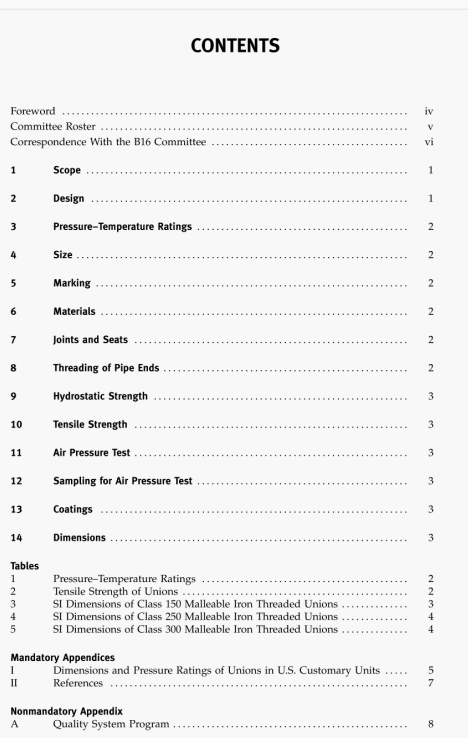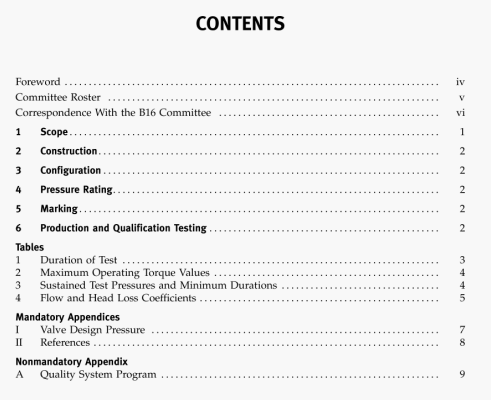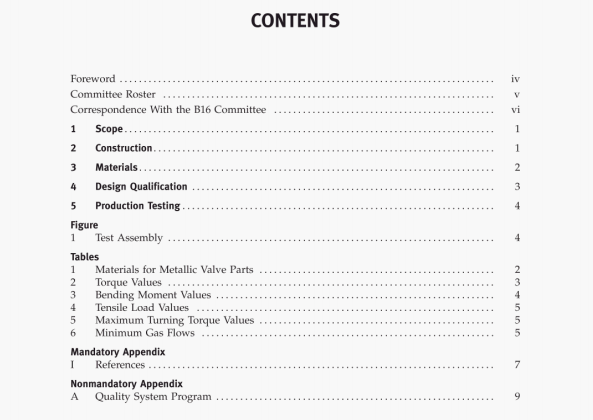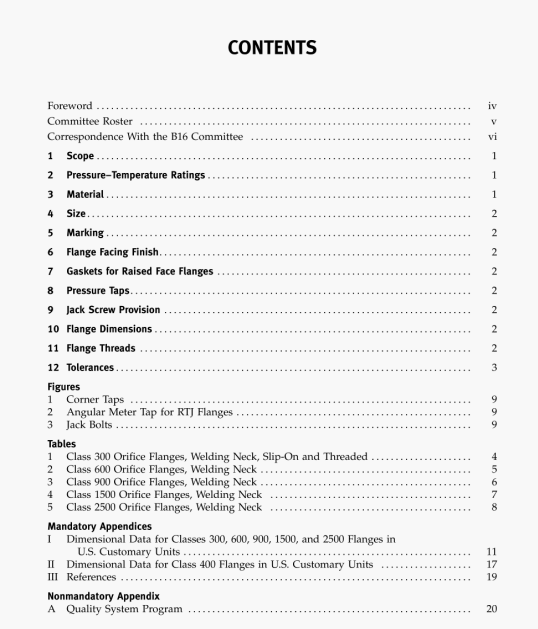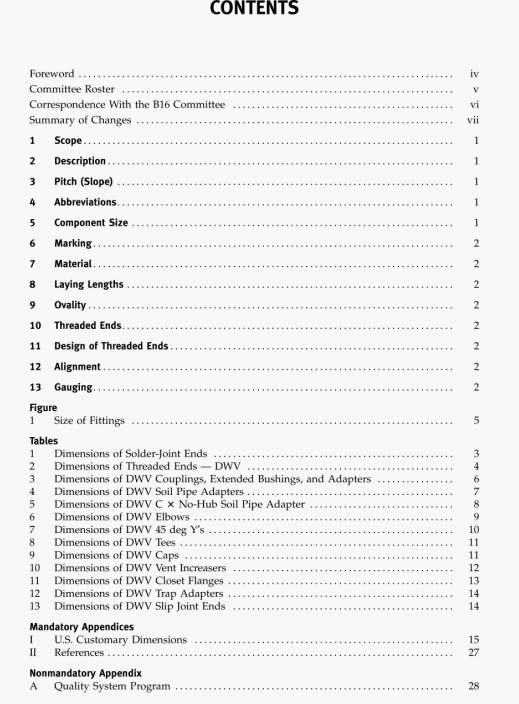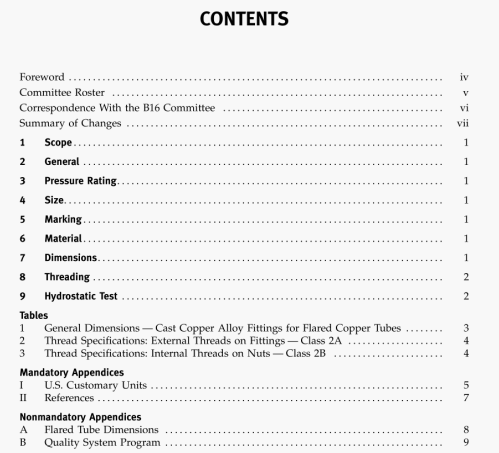ASME A112.14.3:2000 pdf download.GREASE INTERCEPTORS.
These motions shall be so regulated as to have the baffle submerged to within I in. (25 mm) of its lop by the time it reaches the end of the last 2 in. (50 mm) of horiiontal travel. The baffle shall then be removed from the water and moved, grease side up. to the pail where the adhering grease shall be squeegeed off and added to the previous contents. By now, the first baffle has cooled, and the above procedure is repeated using it. The baffles shall be used alternately until the amounts of grease collected in this manner arc less than l by visual observation.
Upon completion of the above skimming procedures. the water shall be drained from the bottom of the pail by means of the spigot. The pail shall then be placed over a gas flame and its contents healed until the residual water is brought to boiling temperature: that is. until bubbles of steam rise through the molten grease. The mixture shall then be poured from the pail into a separatory funnel, the pail shall be squeegeed out and the mixture shall be allowed to stand in the funnel for approximately 5 mm. at the end of which time the water is drawn off from the bottom of the funnel. The remaining liquid shall be permitted to separate for approximately 5 mm more and the water shall again be removed from the bottom of the funnel. The remainder shall be drained from the separator) funnel into one or more preweighed cans.
The cans shall be cooled to solidify the grease. The cans may be placed in a freezer or refrigerator to expedite the cooling process. The solidified contents shall then be scraped and kneaded with a small putty knife, and the water thus worked from the mixture shall be poured off. If the quantity of water thus removed is greater than several drops. the heating and solidilication process shall be repeated. When only a few drops of water are removed in this manner, the mixture shall be assumed to be complelely dewater and weights are taken for computation purposes.
The lard shall be weighed on a grain balance and weights shall be taken to the nearest ‘2 g. Tare weights of the preweighed cans shall then be subtracted from the total weigh and the correct weight of lard removed shall he entered as data.
Upon completion of the above skimming procedures. the water shall be drained from the bottom of the pail by means of the spigot. The pail shall then be placed over a gas flame and its contents healed until the residual water is brought to boiling temperature: that is. until bubbles of steam rise through the molten grease. The mixture shall then be poured from the pail into a separatory funnel, the pail shall be squeegeed out and the mixture shall be allowed to stand in the funnel for approximately 5 mm. at the end of which time the water is drawn off from the bottom of the funnel. The remaining liquid shall be permitted to separate for approximately 5 mm more and the water shall again be removed from the bottom of the funnel. The remainder shall be drained from the separator) funnel into one or more preweighed cans.
The cans shall be cooled to solidify the grease. The cans may be placed in a freezer or refrigerator to expedite the cooling process. The solidified contents shall then be scraped and kneaded with a small putty knife, and the water thus worked from the mixture shall be poured off. If the quantity of water thus removed is greater than several drops. the heating and solidilication process shall be repeated. When only a few drops of water are removed in this manner, the mixture shall be assumed to be complelely dewater and weights are taken for computation purposes.
The lard shall be weighed on a grain balance and weights shall be taken to the nearest ‘2 g. Tare weights of the preweighed cans shall then be subtracted from the total weigh and the correct weight of lard removed shall he entered as data.
